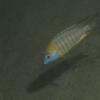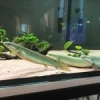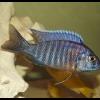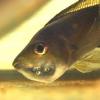I personally wouldn’t discourage people from doing large water changes. Many of us do very large, regular water changes without ever encountering issues. Doing large water changes is lifestyle for serious discus breeders. Logically – only a tiny percentage of the BB in our tanks is in the water column, so even removing the bulk of the water from the system will have negligible impact on your filter providing you use a water conditioner which removes chlorine / chloramines.
But there is one situation where there can be an issue with large water changes . . . . . and the penny has just dropped as to a potential explanation for the problem you have been facing. Sorry I didn’t cotton on earlier.
We have two major types of bacteria in our tanks. As hobbyists we generally talk about the autotrophic bacteria which include the nitrifying bacteria in our filters. There is another group – the heterotrophic bacteria. They are the ones which cause the “bacteria blooms” in tanks, often when a tank is first set up, or if there is a sudden influx of organic material like excess feeding or a dead fish. One salient point - the heterotrophic bacteria reproduce much faster than the autotrophic bacteria.
I won’t go into a detailed description; I’ll provide a link below for further info instead. But here’s a summarised version of what may be happening in your tank.
Consider a water supply with a high organic content. The water supply company adds chlorine to ensure bacteria doesn’t grow in that water and it’s safe for human consumption when it reaches us. Because of the chlorine, bacteria isn’t able to survive in the water and therefore can’t break the organic compounds down while the water is in transit to us through the pipes. That means that it arrives at our place with the organic load intact. But once we put that water into our tank, and add a decholorinator, the bacteria in our tank can have a field day. Its suddenly got access to a bonanza of food. It’s the heterotrophic bacteria which goes wild as they are the ones which reproduce most rapidly. Their rapid growth causes a clouding of the water.
In the process of converting the organics, they consume vast amounts of oxygen, and they produce ammonia. If the oxygen is depleted enough, it will cause issues for fish. Sometimes people see the ammonia increase after a water change and make the assumption that the water change has impacted the nitrifying bacteria in the filter. An understanding of the bacteria shows it’s not necessarily the case!
Anyway – I’m guessing you might be joining the dots. It may well be that the situation changes with each water change if the organic content of the water varies – hence why this has only just become an issue for you.
This article might be of interest for a bit of further reading, otherwise there are other good resources you should be able to find via google.
http://www.oscarfish...c-bacteria.html
Edited by humbug, 26 March 2018 - 09:03 AM.

















